Do you have diastasis recti following the birth of a baby? Do you experience symptoms of abdominal separation, such as back pain, weak core muscles or incontinence?
A separation of the rectus abdominis muscles is quite common. Some natural healing occurs after birth. Research shows that two-thirds of women still have some separation six months postpartum.
So is there a diastasis recti workout? Or some “go-to” diastasis recti exercises?
First, Check for Diastasis Recti
Before we get into how to fix it, assess yourself with a diastasis recti self-check. (Many doctors don’t check at your postpartum follow-up). Understanding the width and depth of your muscle separation is important to your healing process.
Breathing to Strengthen Your Core
The first step in healing diastasis recti is breathwork. Your core is a pressure system. How you breathe matters.
As you breathe in your diaphragm flattens, gently pushing air down into the lungs. Your pelvic floor relaxes. As you exhale, the diaphragm recoils and the pelvic floor gently lifts.
Thanks to the pressure to be skinny, to bounce back, to suck in, etc., many women end up breathing improperly. This impacts the core muscles and pelvic floor.
Fortunately, you can start practicing diaphragmatic breathing any time after birth.
Aim to work on core breathing for about 5 minutes in the morning and again in the evening. This will help rewire your brain, so proper breathing becomes automatic.
Diastasis Recti Exercises to Avoid
You should avoid movements and core exercises that are hard on your midline, like crunches and planks. They place stress on the abdominal wall and the core’s connective tissue, known as the linea alba. They may even worsen the separation.
As a result, refrain from these movements until your core has fully recovered. To be clear, they’re not off-limits forever, just until you’re better able to manage pressure!
Best Exercises for Diastasis Recti
Healing your core means strengthening your transverse abdominis (TVA). These are the “corset” muscles that wrap around your core and hold everything together. The following exercises target these deep core muscles.
Remember, everyone is unique – listen to YOUR body throughout your diastasis healing journey.
Once you’ve hit at least 6 weeks postpartum and have your doctor’s okay to begin working out, add these exercises into your routine.
As a general guideline, aim to complete a couple of sets of 10 reps for each side:
Diastasis Recti Exercises for Beginner/Newly Postpartum Bodies
1. Pelvic Tilts
Pelvic tilts are effective in activating the lower abdominal muscles without straining the linea alba.
- Lie on your back, with your feet on the ground and legs bent at a 90 degree angle.
- Inhale through your nose, down into your rib cage.
- Exhale audibly out your mouth while you gently tilt your pelvis back.
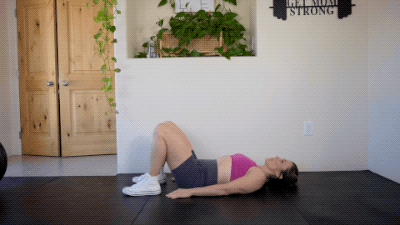
This movement not only strengthens your core but also promotes pelvic stability.
2. Heel Slides
Heel slides are excellent for engaging the core while promoting hip mobility.
- Lie on your back with a neutral spine, then extend one leg out.
- Inhale through your nose, down into your rib cage.
- Exhale as you slide the heel back in toward your body. Alternate legs.
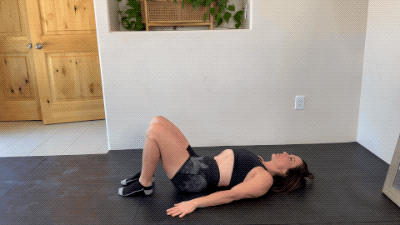
Be sure to keep your core engaged consistently to avoid unnecessary strain on the abdominal wall.
3. Knee Roll-Outs (a.k.a. Leg or Hip Openers)
Also known as leg or hip openers, knee roll-outs target the obliques and transverse abdominis.
- Lie on your back with your spine in a neutral position, knees bent and feet flat on the floor.
- Inhale through your nose into the body as you slowly lower your right knee to the floor. You should feel your abdominal muscles activate.
- Exhale as you bring the knee back up, pulling your pelvic floor and belly up and in.
- Relax and repeat 5-10 times before switching to the other leg.
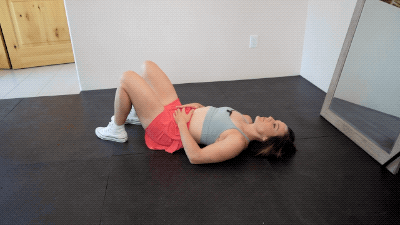
Hip openers enhance core stability and control.
4. Glute Bridges
Glute bridges strengthen the posterior chain and engage the core effectively.
- Lie on your back, with your knees bent and feet flat on the floor.
- Inhale through your nose down into your body while your back is on the ground.
- Exhale out your mouth as you rise, lifting your butt off the ground and squeezing your glutes at the top. (Be careful not to overextend your body at the top of the movement, and make sure to avoid arching your back!)
- As you relax down, inhale and reset.
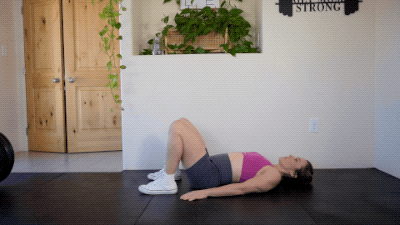
Ensure you’re lifting with your glutes and core, not your lower back.
5. Cat Cow
Cat-Cow gently stretches and activates the deep core muscles. This promotes mobility and controlled engagement without straining the abdominal wall.
- Get on all fours, with your hands under your shoulders, hips and knees aligned.
- Inhale through your nose into your body as you let your tummy relax, looking toward the ceiling.
- Exhale audibly as you press your palms into the floor, round upper back, and tuck your pelvis.
- Relax and repeat.
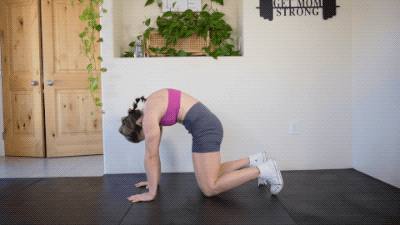
Flow through Cat-Cow with intention, letting each movement reconnect you to your core.
Here is a great diastasis recti workout for beginners:
Diastasis Recti-Safe Exercises for Intermediate Levels
Once you’ve mastered the beginner exercises and feel confident managing core pressure, add in the following:
6. Bird Dog: Balance and Stability
This exercise challenges your balance while engaging multiple core muscles.
- Get on all fours, with your hands under your shoulders, hips and knees aligned.
- Inhale down into the body as you gently let your tummy relax. Lift your left leg and right arm away from your body center.
- Exhale out your mouth as you extend the opposite arm and opposite leg. Be sure to keep a neutral spine. Alternate arms and legs.
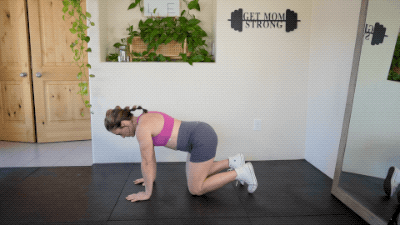
Keep your hips level during the movement to enhance core engagement.
7. Heel Tap March (a.k.a. Heel Drops)
This exercise strengthens the deep core and pelvic floor. This controlled, low-impact movement helps to rebuild stability without stressing the abdominal wall.
- Get into a starting position on your back with your knees bent, feet on the floor. Your back should be flat against the ground. As you inhale, feel your ribs expand with air.
- Exhale audibly, drawing your core tight and pelvic floor up. With control lift your leg and return the heel with a tap to the ground.
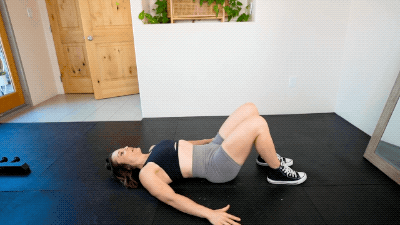
Keep it slow and steady—each tap is a step toward a stronger, more connected core.
8. Quadruped Extensions
Quadruped extensions build core stability and balance. They engage the deep abdominal muscles without putting excessive pressure on the midline.
- Get onto all fours, and drop to your forearms.
- Inhale through your nose while all four limbs are down.
- Keeping your knee bent, exhale as you extend your foot straight up toward the ceiling. Your hips and shoulders should remain in place, parallel to the floor.
- Repeat with the other side.
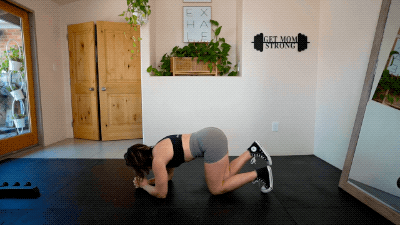
Focus on control over speed—each extension is a chance to strengthen and reconnect with your core.
9. Dead Bug Prep
Dead Bug Prep activates the deep core and improves coordination. This helps to strengthen the abdominal wall while keeping intra-abdominal pressure in check.
- Begin lying flat on your back, march your legs up one at a time. With knees bent, inhale through your nose and down into your body.
- Exhale as you extend opposite arm and leg (e.g. left leg and right arm)
- Switch sides and repeat.
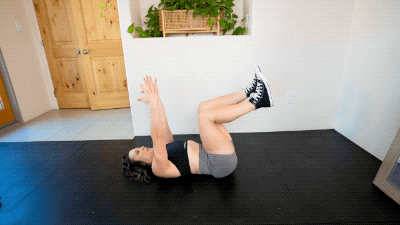
Move with intention—every controlled rep brings you closer to a more stable, supported core.
10. Modified Forearm Side Planks
Side planks are fantastic for the obliques but need modification to be safe for diastasis recti.
- Lay on your side, legs stacked and prop yourself up on your elbow.
- Inhale through your nose, down into the body to set your core.
- Exhale as you lift your hips and hold, keeping bottom knee bent and on the ground. As you advance further, keep both legs straight out and lifted when you raise your hips.
- Use little exhales to prevent bearing down on your pelvic floor.
- Hold for a few seconds and try to build up over time. Repeat on the other side.
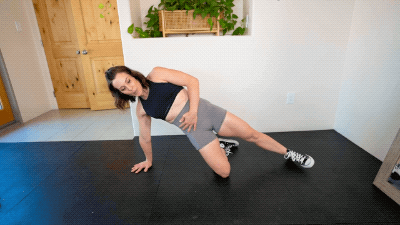
This variation reduces pressure on the abdominal wall while still building strength.
Here is a great diastasis recti workout for intermediates:
Give Yourself Time
Remember, it takes time to heal. Almost everyone experiences some level of diastasis recti during pregnancy, and most don’t fully heal on their own. Take care of your amazing body and rebuild your core strength!
If you are experiencing discomfort you must consult with your physician or a physical therapist who focuses on pelvic floor wellness.
Need Help Healing Diastasis Recti?
For more postpartum-friendly exercises, check out the Strong Like A Mother (SLAM) program. It helps you build total body strength, while healing your core and pelvic floor.
SLAM offers the following safe and effective programs:
- Core Basics
- SLAM Bodyweight
- SLAM Bridge
- SLAM30
- SLAM45
- SLAM Advanced
- SLAM Elite
- SLAM Pregnancy
- SLAM Core
- SLAM Barre
- SLAM Nutrition
- SLAM Stretch
- SLAM Challenges
